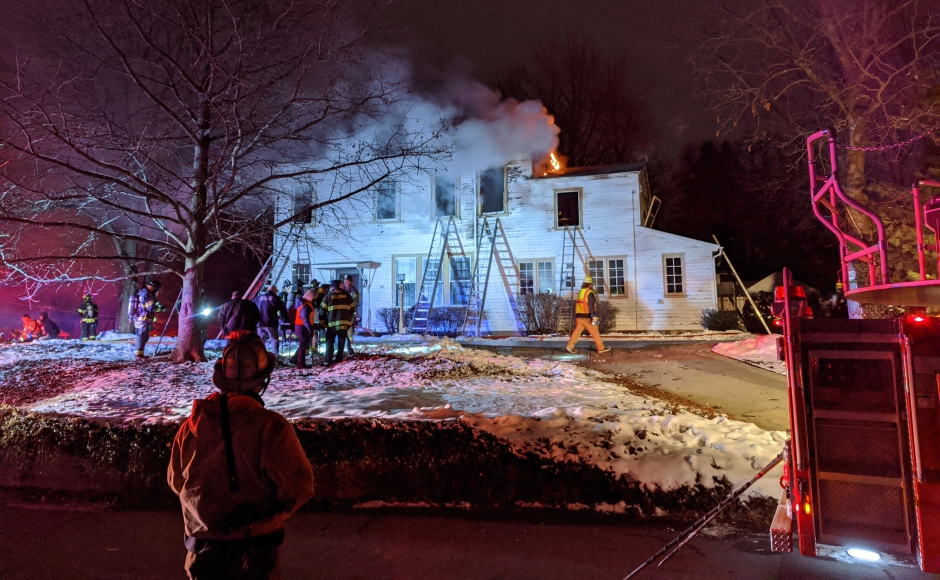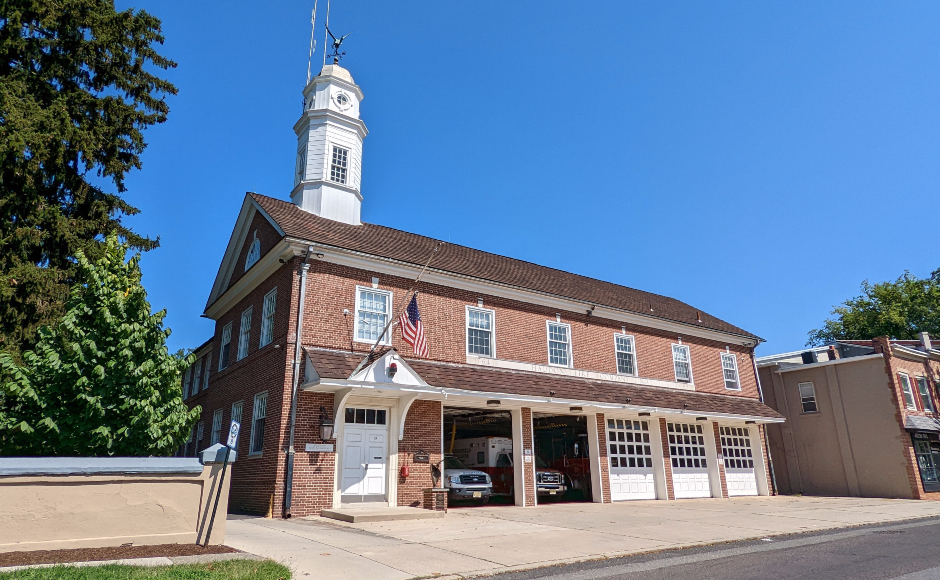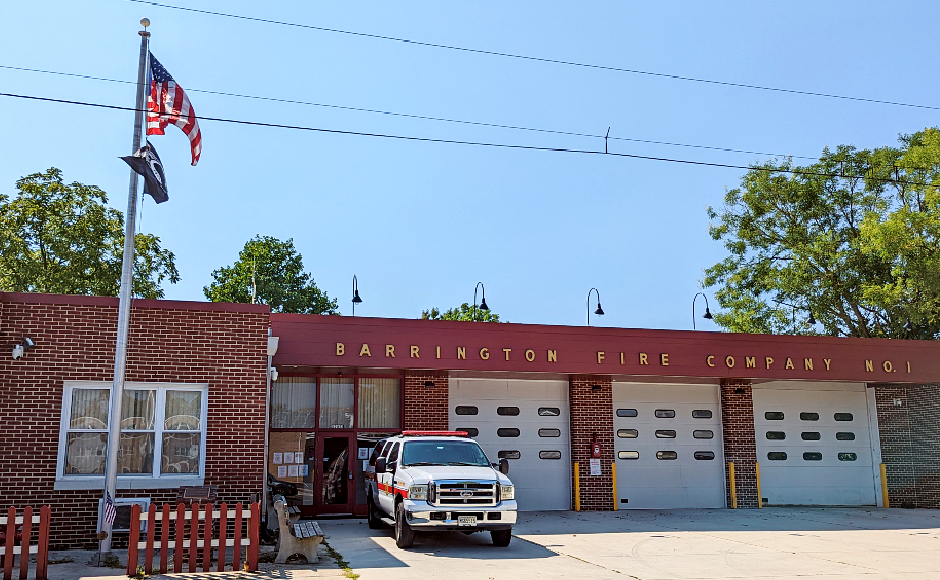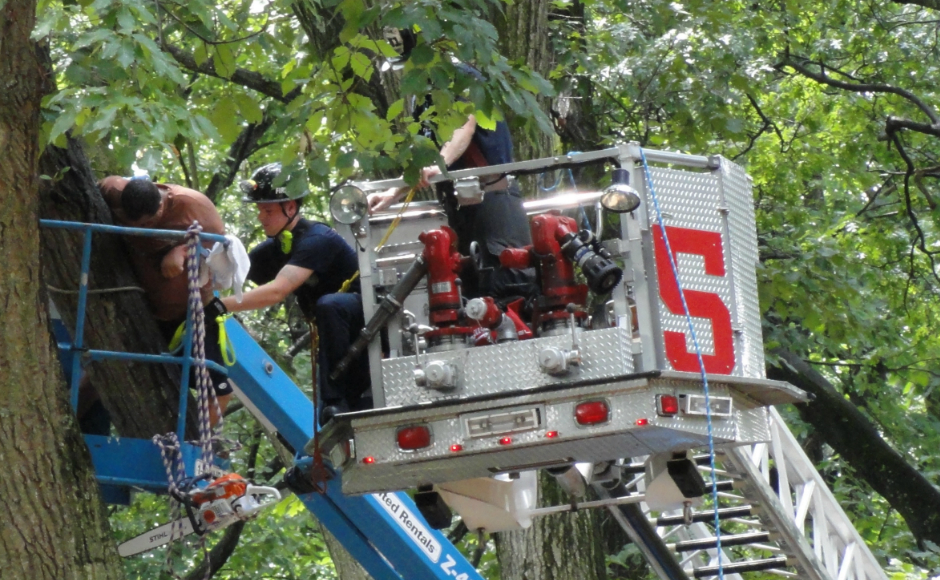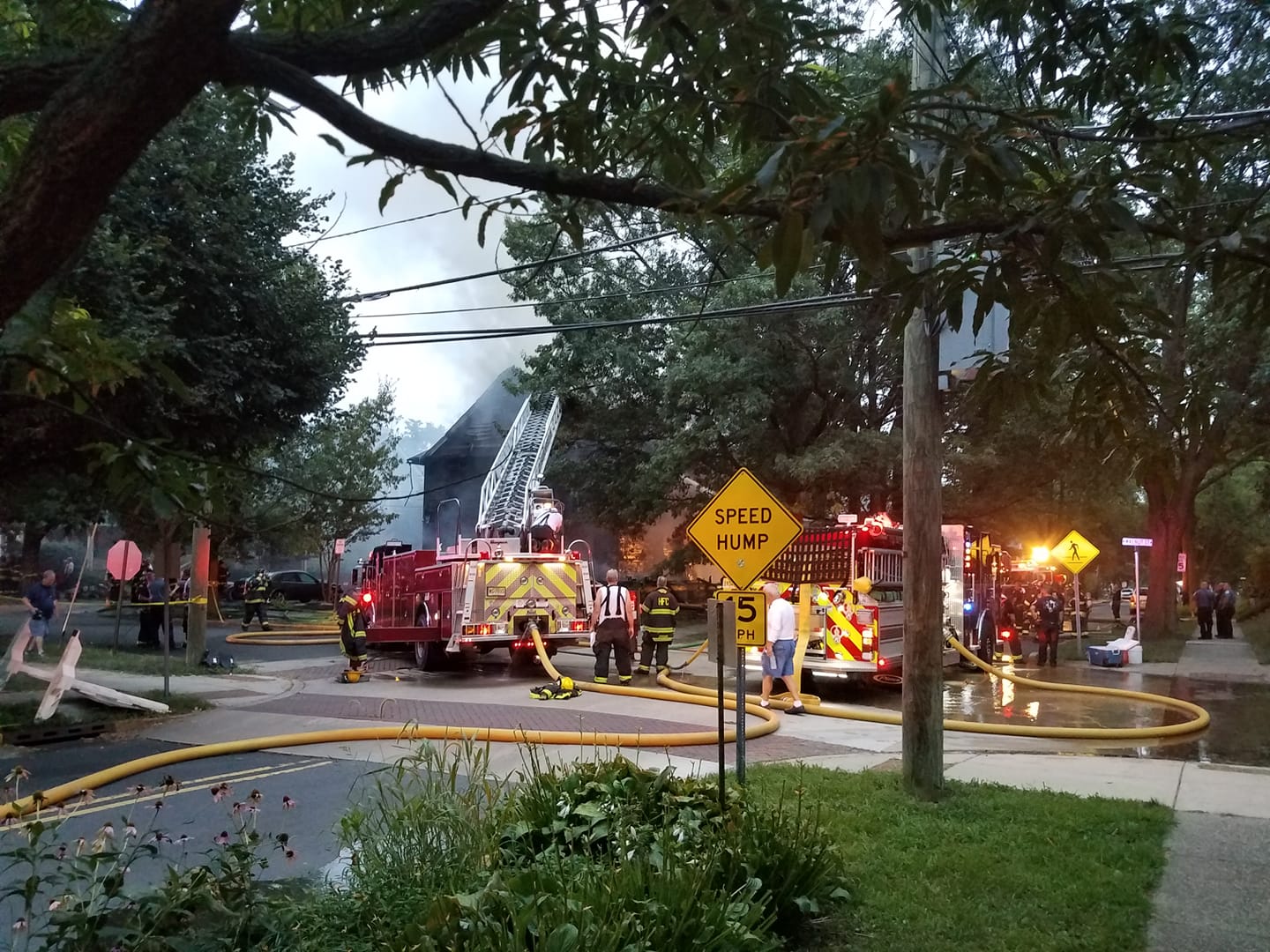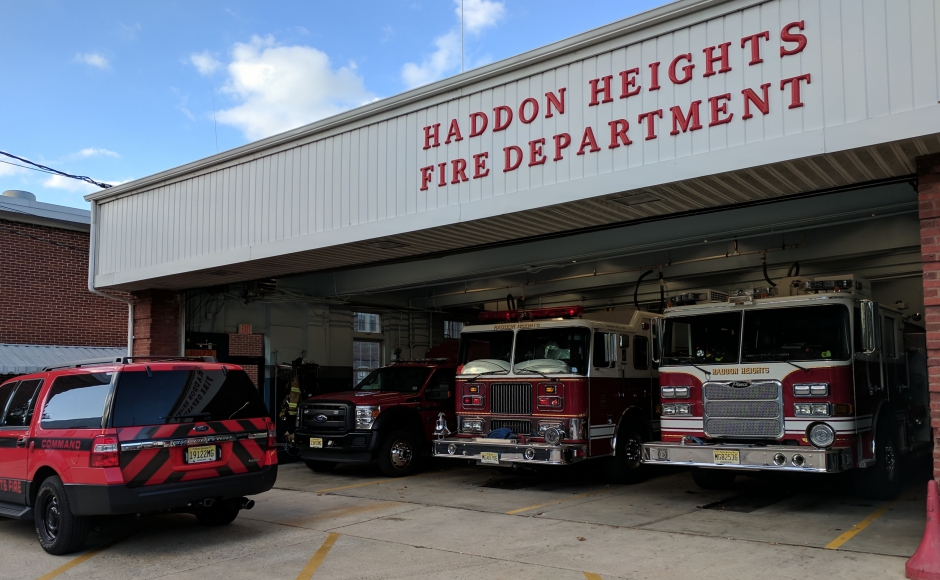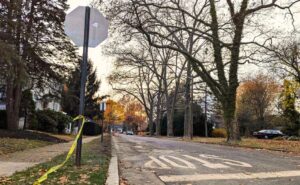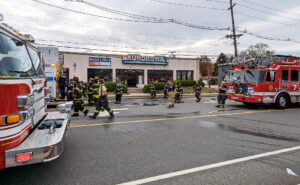A $75,000, state-funded study confirms both that there are no shortcuts to financial sustainability for local fire and EMS services, and that the status quo approach is unsustainable.
By Matt Skoufalos | December 3, 2023
In the face of increasing call volumes, insufficient volunteerism, and rising expense, the boroughs of Haddonfield, Haddon Heights, and Barrington have been searching for ways to better manage the delivery of their fire and emergency medical services (EMS).
Last July, the three communities won a $75,000 Local Efficiency Achievement Program (LEAP) Grant from the New Jersey Department of Community Affairs (DCA) to study the potential for efficiencies deriving from sharing fire and EMS services.
On Monday, consultants from Manitou Inc., of Peekskill, New York, will present the results of that study at a public meeting in Haddonfield.
The report paints a picture that local leaders say had been clear to them for years: individually funding their emergency services has led to escalating costs and expanding, unmet need, even with thousands of unpaid hours from volunteer professionals.
As if to underscore the rapidly evolving nature of these challenges, in the year-and-a-half since the LEAP grant was awarded and the study begun, Barrington and Haddon Heights began operating a joint fire service under a single chief, and Haddonfield accepted the unanticipated resignation of its fire chief of four years, a 30-year volunteer.
For municipal governments, trying to deliver affordable, reliable emergency protection without dramatically raising taxes or allowing response times to balloon means finding ways to pool resources and split costs.
‘This is the way we have to move’
Barrington Mayor Kyle Hanson said that the Manitou study simply confirmed that his borough is on the right trajectory with its approach to shared services.
After a year of operating a combined fire and EMS service with Haddon Heights, both communities are ready to extend the agreement for another four years.
Each town is supported by a combination of volunteer and paid firefighters that neither could staff nor fund alone, and the daytime shifts — when most volunteer firefighters are at work — are covered.
“We are very happy with the shared service we signed up with Haddon Heights,” Hanson said. “Now that we have full-time firefighters, we can get a rig out all day long during the day. The response times have gone down; they’re getting enough staff to run a call. We’re exploring how to expand those coverage hours.”
According to the Manitou study, the first-year operating budget of the combined fire service ($322,900) covers a three-firefighter weekday crew operating out of the Barrington fire house.
A pool of 10 part-time volunteers covers three day shifts a week. On evenings and weekends, fire coverage is run out of the Haddon Heights fire station by a roster of 35 active volunteers sourced from both communities.
Since most of the firefighting labor pool is unpaid, there’s little financial savings in operating a joint department; in fact, hiring professional firefighters is an added cost. However, the shared services agreement means both communities are splitting the bill.
“Prior to their shared service agreement, both municipalities would have had to hire additional personnel to guarantee daytime coverage that is not reliant on volunteers,” the Manitou study noted.
And subsequently: “What it does offer Barrington and Haddon Heights is the ability to spread current and future financial liabilities over two tax bases rather than one.”
To Hanson, those findings simply affirm the decision both communities already made to partner, while underscoring that their neighbors in Haddonfield are facing a familiar circumstance.
“We got into applying for this grant thinking they’re going to tell us to go with shared services, and then in the meantime, we just pulled the trigger ourselves,” he said. “Haddonfield now is in the same sort of situation, which I sympathize with because we went through it last year.
“We got into [the study] hoping to prove to people that this is the way to go,” Hanson said. “It’s nice having this empirical data; it’s nice that we keep adding the backup to those decisions.
“These professionals are telling us this is the way we have to move.”
‘We have to be able to have constructive dialogue’
Haddonfield Mayor Colleen Bianco Bezich said the Manitou study confirmed her understanding that first-responder costs in her borough were far greater than those in comparably sized, neighboring communities.
The Barrington Ambulance Association (BAA) serves Barrington and Haddon Heights as well as neighboring Runnemede.
Barrington contributes $140,000 annually for this service, which is operated out of its EMS building; Runnemede contributes another $75,000 annually, and Haddon Heights chips in $25,000, for a total of $240,000 in municipal dollars. BAA draws in another nearly $596,000 from fund drives, grants, and billing for services.
Comparatively, Haddonfield spent $710,500 for EMS salaries and $204,500 on its fire department budget for 2023. From 2020 to 2023, the borough spent less than one percent of its operating budget on fire service and an average of 3.5 percent on EMS annually.
“When I go to meetings and other towns are paying less than half a million dollars [for EMS], and servicing neighbors, it’s a real issue,” Bianco Bezich said. “If our budget’s at $21 million and we’re at $900,000 now [for emergency services], the future is not looking bright.
“This report illuminates a lot of the challenges we’re facing,” she continued, “and this information came from firsthand research, interviews, speaking with the chiefs. We have something here that people can put their hands on.”
Haddonfield ambulance services answered 90 percent of calls within a 4.5-minute travel time, and Barrington covered all of its emergency calls within five minutes, the Manitou study reported. The study also noted, however, that “the recognized standard stipulates that 4 minutes, or 240 seconds, is the accepted response time benchmark for BLS service.”
Bianco Bezich affirmed that Haddonfield, like each borough participating in the study, is deeply indebted to the work that its volunteer firefighters and paid EMTs do. At the same time, she said, there’s neither sufficient volunteers in the community to staff its fire service, nor broad support from higher levels of government to take those EMS costs off its plate through regionalization.
“I’ve had up-front, public, vocal conversations with county and state agencies,” Bianco Bezich said. “There’s no dollars right now for a large, regional entity to be created and assume any and all of these suburban communities’ first-responder services. Whether people are for or against it, there’s just not.
“We’re all proud of our towns, we all love our first responders, and we all have a duty to protect our residents and our business owners,” she said. “I think things got so out of whack because nobody asked the tough questions. For decades, Haddonfield’s been an island, and we didn’t talk to other mayors on these issues.”
Beyond the need to build future capacity into its budget for the growing costs associated with providing emergency services, Haddonfield must address the fact that not doing so overtaxes its neighboring communities, which must work harder to pick up the slack on mutual aid responses.
“The neighboring town — or fire district, in the case of Westmont — is stepping up for us, first-on, 6 a.m. to 6 p.m.,” Bianco Bezich said. “At some point, something has to give, whether that’s a financial or a manpower contribution, or something other than mutual aid. How long is [Haddon Township Fire] Chief [Dan]. Devitt supposed to be on for Haddonfield? And do a lot of Haddonfield residents know that [he is]?”
Whatever the solution that Haddonfield adopts, the Manitou study underscored the tenuousness of the patchwork fixes that the borough has attempted for its fire service to date.
Forming a hybrid company with its neighbors could be one possibility, although the study illustrates why, for reasons of response times and geographic coverage, it’s not likely feasible for Haddonfield to join the Haddon Heights-Barrington Fire Department specifically.
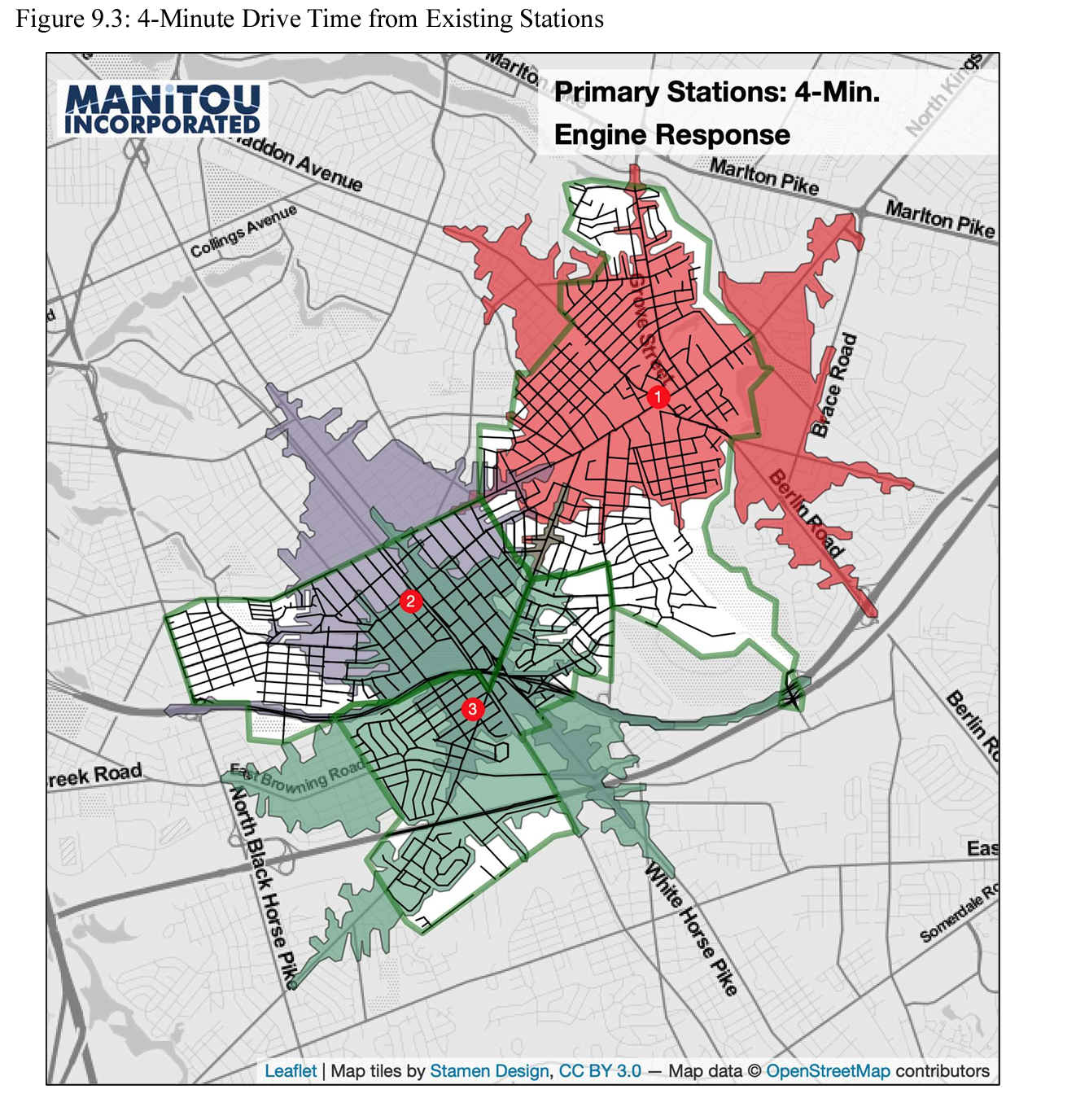
Geographic areas accessible by current services within four-minute response window. Credit: Manitou.
Similarly, the stopgap firefighter stipend program Haddonfield implemented presents its own financial challenges. In addition to being more expensive than sharing the costs of a paid fire crew with another community, it relies on local availability of qualified volunteer firefighters, which is limited. And according to federal labor law, those volunteers can’t earn more than 20 percent of a career firefighter’s salary ($10,000) within a calendar year — so once they hit their earnings cap, they’re no longer available to do the job.
“What happens when you get to July, and 10 of 20 volunteers hit the stipend mark?” Bianco Bezich said. “We aren’t recruiting at the rate that could sustain [that]. Even if the money was there, we don’t have the number of volunteers in the existing ranks that could qualify.”
Beyond those realities, Bianco Bezich said the Haddonfield fire service is battling the same cultural issues that Barrington and Haddon Heights did prior to their merger. Some firefighters might prefer the stipend if it means retaining the historic, all-volunteer status of Haddon Fire Company No. 1, which is among the oldest continuously active fire departments in the United States.
Disagreements over that point seem eventually to have contributed to the resignation of Haddonfield Fire Chief Lou Frontino, whom the borough honored for his service to the community last week.
Frontino’s message to the fire company, which was CC’d to borough commissioners November 3, cited the emotional toll of trying to bridge the divide within his fire house:
“I remind you that four years ago I was begged to take this position because you all knew my character. I continued to complete my oath to Haddonfield to serve and protect as chief for the past four years, even after having a stress-induced heart attack. I fought for this company that I joined as a volunteer 30-plus years ago.
“This past week and the egos under me have solidified my change in heart. I will not continue to be disrespected, berated, and blamed for the events of the past four years. We got through a global pandemic, [and] lost countless members due to career hiring and personalities clashing.
“I have done my best to unify multiple [facets] of this town’s dynamic, to no avail. I have nothing but respect for this organization, even after how I was treated by some. I’m that volunteer who wanted to just protect the town, be part of the brotherhood, and do my duty… which many lost sight of [in] fighting for hierarchy.
“Effective immediately, I will step down as Haddon Fire Co. #1 chief, and go inactive — not because I can’t do the job, but because you made it impossible for me to continue to do so.”
In the interim, Haddonfield Assistant Fire Chief Pat Gorman is serving as acting Haddonfield fire chief. Before the leadership void is filled permanently, the company must recommend a new chief who meets the technical qualifications of the role and will pass muster with the borough commissioners. Frontino is remaining with the Haddonfield Ambulance Association as the paid head of its EMS.
Whomever is named as the new fire chief, or whatever form the future of Haddonfield emergency services takes, Bianco Bezich said the borough government must make “the way we govern the fire department much more in keeping with public safety in the 21st century,” including memorializing its longstanding Advanced Life Support (ALS) agreement with Virtua Health, which the mayor said “should have been done long ago.”
“Importantly, we just have to acknowledge that other things can be done to maintain the history and the culture [of the fire company], but not at the sacrifice of public safety,” she said. “I think we have to be able to have constructive dialogue.”
‘If we don’t continue to move forward, we’re setting this up to repeat’
Haddon Heights Mayor Zach Houck, a career firefighter and captain in the Cherry Hill Fire Department, is well familiar with the cultural struggles that can overwhelm proud fire departments that are tasked with confronting the material realities of the profession.
For every town like Barrington or Haddon Heights that has worked to push past the discomfort of reconciling the historic work of its volunteer fire service with the need to make changes, there’s a Haddonfield in which the same story is in the process of playing out.
Houck, who comes from a generational firefighting family, pointed out that many of the fire companies in South Jersey precede the incorporation of the communities they serve. Their earliest firefighting volunteers were drawn from among local elected officials, police officers, and civic leaders. Today’s firefighters see themselves in the same roles, but the foundations that underpin the job have shifted.
“There’s a lot of tradition,” Houck said. “It can get emotional. But all that is supposed to support and boost morale to make you a greater organization so that you serve the public at a greater capacity. When it’s undermining that, that’s a challenge.
“We have individuals who are putting their pride and ego in front of all this,” he said.
The demands of a firefighting career have likewise been amplified from what they once were even a generation ago, Houck said. A 10-week firefighter training program at the Cherry Hill Fire Academy requires an amount of schooling roughly equivalent to a semester or more of college.
“Unless you’re a high-school kid, you’re supposed to find time to do this training on your weekends,” he said. “What 35-year-old today who’s not working, or raising a family and all the things that come with it, has the time to put in every weekend away from their family, all semester long, just to become a fireman?”
Moreover, the cost of living in communities like Haddonfield, Haddon Heights, and Barrington can make it impossible for firefighters to afford to reside in their towns of service, which means that once career firefighters are trained, they probably have to move on.
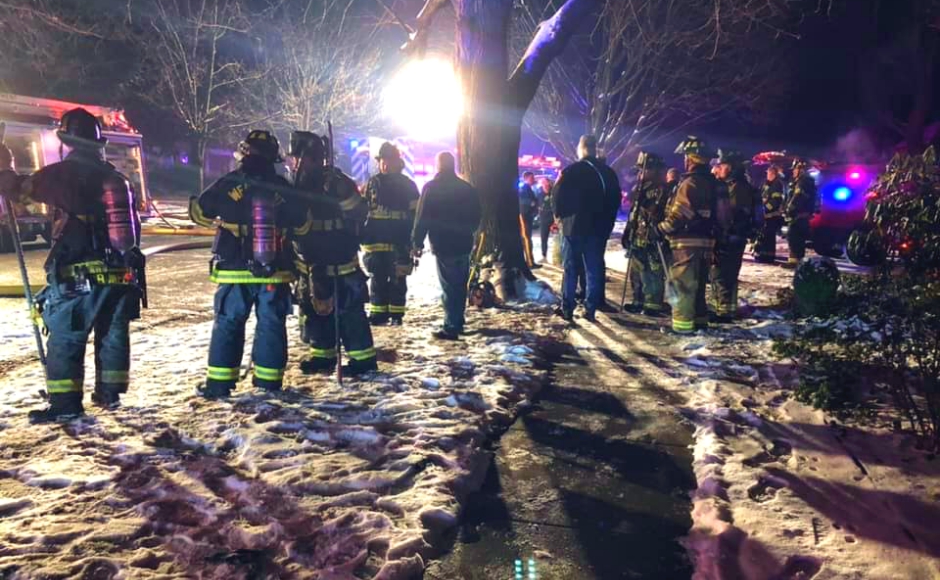
Firefighters respond to the scene of a house fire on Second Avenue in Haddon Heights. Credit: Alex Grant.
“When they call 9-1-1, your neighbors want the best and the brightest people coming to help them,” Houck said.
“All I’m doing is training people to support some other organization somewhere else.”
In the meantime, volunteer firefighters struggling to keep up with increasing call volumes across the board can become desensitized to the more tedious demands of the job, like repeat calls for malfunctioning alarm systems, and simply turn off their radios.
“You’ve got volunteers picking and choosing which calls to go to [because] it burns them out,” Houck said. “You don’t have blue-collar employees anymore who would leave work and go on the fire engine and put out a fire.”
Beyond any of those cultural challenges, Houck also has a weather eye on the expanding cost projections outlined in the Manitou report. By 2033, many of the options it describes forecast emergency services costing some $7 million annually, as call volumes across the three-town, 25,000-resident study area continue to grow.
“The greater the number of organizations you can scale with, it becomes more efficient,” Houck said. “All these towns already operate on a task-force model. We all rely heavily on each other, and it’s pre-scripted, thanks to the county EMS and fire coordinators.
“You rely on neighboring partners and mutual aid; when you look out 10, 15 years from now, to make it economically efficient, you have to come together,” he said.
Neither are the fire services that serve those communities currently operating out of facilities that are equipped to meet the 21st-century demands of the job. In Haddon Heights and Barrington especially, Houck said fire and EMS buildings will need 24-hour bunk rooms, expanded restrooms, and improved energy efficiency.
Both communities’ leaders have discussed a five-year timetable for addressing the capital needs around creating new facilities for their departments.
“We need one fire house between the two,” Houck said. “We can’t really retrofit either building to accomplish what it needs to accomplish. Barrington EMS is really in the same situation. We’re going to try to get creative with this, but it’s something we’re going to go after.”
In the meantime, he said, all three municipalities must try to build on any ground they gain.
“How do we continue to expand the career department so we can put a guarantee to an apparatus that’s both EMS and fire when you call 9-1-1?” Houck said. “We have to be prepared to find a way to increase staffing to cover that bigger swath of time, and there’s still a need for volunteers.
“Thanks to the leadership of Barrington and Heights, we got through a little bit of this brick wall ahead of the game, and we’re on the other side,” he said. “If we sit down and say, ‘We’re good,’ and we don’t continue to move forward, we’re setting this up to repeat this whole issue.”

